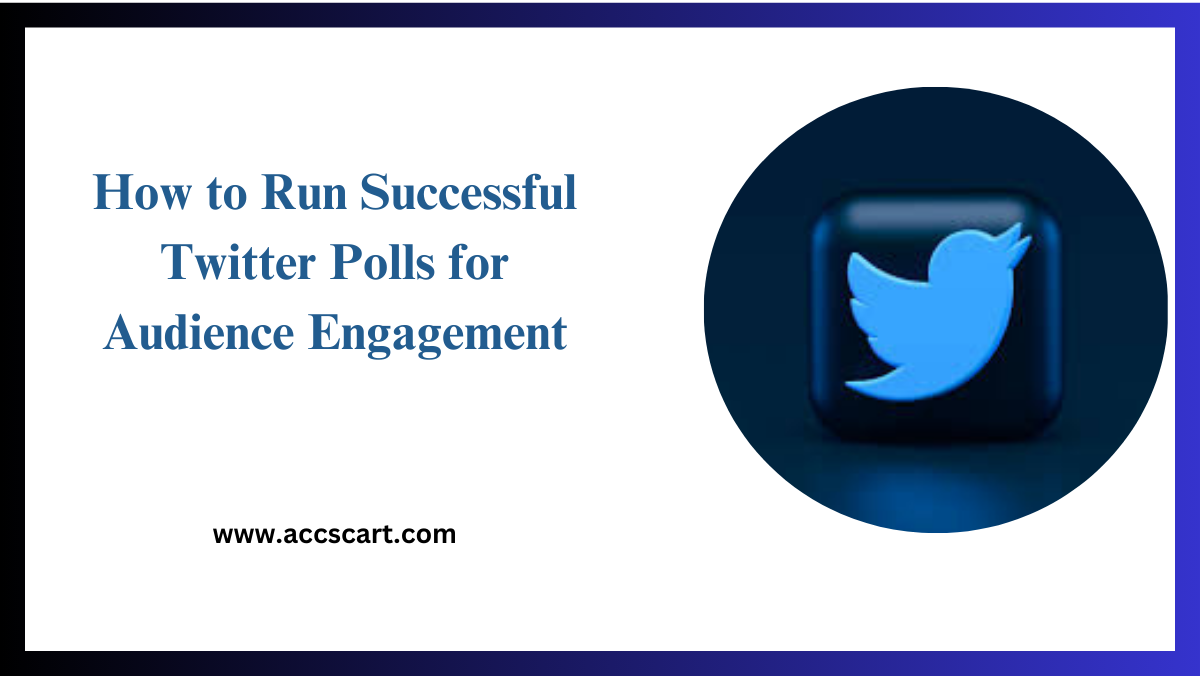In today’s digital age, engaging with your audience is more important than ever. Whether you’re a business, an influencer, or just someone looking to connect, Twitter polls offer a unique way to interact with your followers.
Polling your audience on Twitter not only garners feedback but also boosts your engagement rates significantly. This blog post will walk you through the essentials of running successful Twitter polls, from crafting effective questions to analyzing poll results. By the end, you’ll be equipped with actionable tips to make the most of this powerful engagement tool.

The Importance of Polls on Twitter
Twitter polls are more than just fun little quizzes—they offer significant strategic value. For businesses and influencers alike, these polls serve multiple purposes, including gathering customer preferences, conducting market research, and even crowdsourcing ideas.
- Boost Engagement
One of the primary benefits of Twitter polls is their ability to boost engagement. When you ask questions that pique your followers’ interest, they are more likely to interact with your poll. This interaction can lead to increased visibility for your tweets, as Twitter’s algorithm favors content with high engagement rates.
- Gather Valuable Insights
Twitter polls allow you to gather valuable insights straight from your audience. Whether you’re curious about product preferences or seeking feedback on a service, Twitter polls provide a direct line of communication. These insights can guide your business decisions and strategies, ensuring that you’re aligned with what your audience wants.
- Enhance Customer Relationships
People love to share their opinions. By asking for their input through polls, you show that you value their opinions, which helps to enhance customer relationships. This, in turn, can lead to higher customer loyalty and brand advocacy.
Crafting Effective Poll Questions
Creating an effective Twitter poll starts with crafting the right questions. Your questions should be clear, concise, and engaging to ensure maximum participation.
- Keep It Simple
Simplicity is key when it comes to crafting poll questions. Avoid jargon and complicated language. Instead, opt for straightforward questions that are easy to understand. For instance, instead of asking, “What are your thoughts on our new customer relationship management system?” you could ask, “Do you like our new CRM?”
- Be Specific
Specificity helps in getting more accurate responses. Instead of asking a broad question like, “What’s your favorite product?” you could narrow it down to, “Which of our new fall products do you like the most?” This approach not only makes it easier for respondents to choose but also provides you with more actionable data.
- Offer Balanced Choices
Balance is crucial when offering choices in your poll. Make sure each option is distinct and covers the spectrum of possible responses. For example, if you’re polling about preferred social media platforms, include options for Twitter, Instagram, Facebook, and LinkedIn, rather than grouping some together or leaving out key choices.
Promoting Polls for Maximum Participation
Creating a great poll is just the first step. To get the most out of your Twitter polls, you need to promote them effectively.
- Leverage Hashtags
Using relevant hashtags can significantly increase the visibility of your polls. Hashtags help categorize your content, making it discoverable to a broader audience. For example, if your poll is about coffee preferences, you could use hashtags like #CoffeeLovers, #CoffeePoll, or #MorningBrew.
- Share Across Platforms
Don’t limit your poll to just Twitter. Share it across all your social media platforms to drive more traffic. You can post a link to your Twitter poll on Facebook, Instagram, and even LinkedIn, encouraging your followers on those platforms to participate.
- Engage with Participants
Engaging with participants can further boost your poll’s visibility. Reply to comments, retweet interesting responses, and thank participants for their input. This level of interaction not only promotes your poll but also fosters a sense of community among your followers.
Analyzing Poll Results
Once your poll has concluded, it’s time to analyze the results. Understanding the data you’ve collected is crucial for making informed decisions.
- Quantitative Analysis
Start with a quantitative analysis of the results. Look at the number of votes each option received and calculate the percentage share. This will give you a clear picture of the overall preferences and opinions of your audience.
- Qualitative Insights
In addition to the quantitative data, pay attention to any qualitative insights you can gather from comments and replies. These insights can provide context to the numbers, helping you understand why your audience voted the way they did.
- Identify Trends
Look for patterns and trends in the data. For example, you might notice that a particular demographic consistently prefers one option over another. Identifying these trends can help you tailor your products, services, or content to better meet the needs of your audience.
Incorporating Feedback into Strategy
The final step in running successful Twitter polls is to incorporate the feedback you’ve gathered into your overall strategy. This ensures that your efforts are not just an exercise in engagement but a meaningful way to drive your business forward.
- Update Products or Services
If your poll reveals a strong preference for a particular feature or product, consider incorporating this feedback into your offerings. This could mean updating an existing product, introducing a new one, or even discontinuing something that isn’t resonating with your audience.
- Adjust Content Strategy
Use the insights from your polls to adjust your content strategy. If your audience shows a preference for certain topics or formats, focus more on creating content that aligns with these preferences. This will help you maintain high engagement rates and keep your audience interested.
- Plan Future Polls
Finally, use the data to plan future polls. Regularly engaging your audience with polls keeps them involved and gives you a steady stream of valuable data. Consider creating a calendar for your polls, focusing on different aspects of your business or areas of interest to your audience.
In conclusion, Twitter polls are a powerful tool for engaging your audience and gathering valuable insights. By crafting effective questions, promoting your polls, analyzing the results, and incorporating the feedback into your strategy, you can leverage this tool to drive your business forward. Ready to take your Twitter engagement to the next level? Start creating your first poll today and watch the magic happen!
Common Mistakes to Avoid in Twitter Polls
While Twitter polls can be a fantastic tool for engagement and data collection, several common mistakes can hinder their effectiveness. By being aware of these pitfalls, you can ensure your polls are successful and valuable.
- Overcomplicating Questions
One of the most frequent mistakes is asking overly complex or ambiguous questions. This can confuse participants and lead to lower response rates. Stick to simple, direct questions that are easy to understand at a glance.
- Neglecting the Audience’s Interests
Failing to consider what is relevant or interesting to your audience is another common oversight. Ensure your poll topics resonate with your followers by aligning them with current trends, interests, or ongoing conversations within your community.
- Ignoring Timing
Timing is crucial when publishing polls. Posting during off-peak hours can result in fewer interactions. Use analytics to determine when your audience is most active and schedule your polls to coincide with those times for maximum participation.
- Limiting Response Options
Providing too few response options can limit the usefulness of your poll results. While it’s important to keep choices clear and concise, ensure they offer a comprehensive range of possible answers so that participants feel their opinions are accurately represented.
- Failing to Follow Up
Once a poll is complete, it’s important not to overlook the importance of follow-up. Share the results with your audience, thank them for their participation, and explain any subsequent actions or decisions that will be influenced by their feedback. This demonstrates that their input is valued and encourages future participation.
By keeping these common mistakes in mind and taking steps to avoid them, you can create Twitter polls that not only engage your audience but also provide insightful data to drive your strategic decisions.









